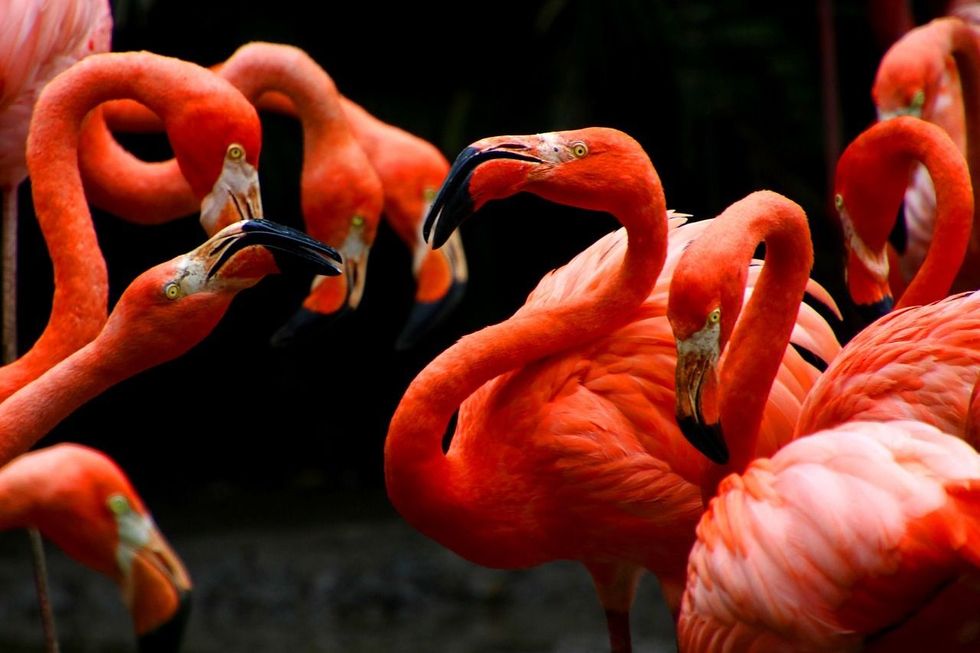Flamingos are among the most recognizable birds in the world, with their vibrant pink feathers and unique way of standing on their legs. These majestic creatures have captured the attention of people for centuries, and their legs play an important role in their daily lives.
In this article, you will learn interesting facts about flamingo legs, including how they help the birds stay alive in their natural environments and how they look so beautiful. Flamingo legs are not only beautiful to look at, but they are also very important for the birds' health.
Kids can develop a greater love and respect for these beautiful birds and the complex ways that they thrive in their natural habitat. Check out these flamingo legs facts and discover how important their legs are and what makes them really special.
The Unique Anatomy Of Flamingo Legs

Flamingo legs are truly unique. They are built in a way that makes them different from other birds. For flamingos, these long, thin legs are great for moving through water and keeping their balance. Take a closer look at what makes flamingo legs special and how they fit into the birds' bodies as a whole.
- Flamingo legs don't have feathers on them like the rest of their bodies, so they can move through the water without getting slowed down.
- Flamingos have knees, but they are covered by feathers and located close to their bodies.
- The part of a flamingo's leg that looks like a knee is actually its ankle, and the long, thin part of its leg below the ankle is its foot.
- Flamingos use the webs on their feet to move mud and water around and find insects, algae, and shrimp that they like to eat.
- The joints in flamingos' legs are very flexible, so they can put one leg under their body while standing on the other.
- This unique joint system also helps flamingos maintain their balance while standing in windy conditions or on rough surfaces.
- Flamingos have thick skin on their feet to protect them from the hot or salty lake floors where they walk.
The Role Of Flamingo Legs In Feeding
 Shutterstock
Shutterstock
Flamingos' legs are very important to their eating habits because they let them get to food sources that they wouldn't be able to reach otherwise. The length and structure of their legs allow flamingos to use unique feeding strategies, ensuring they can find enough food in their aquatic habitats. Discover how flamingo legs contribute to their ability to find food in the wild.
- Flamingos can walk through shallow water with their long legs to find food like small fish, insects, and algae.
- Flamingos use their webbed feet to stir up the mud and water. This way of feeding, called 'stamp feeding', helps them find hidden food that they can then grab with their specially adapted beaks.
- In the water, flamingos often eat with their heads upside down. They keep their bodies upright with their legs while they filter food through their beaks.
- Flamingos often eat in groups. They do this by moving their legs in sync with one another in the water, which helps stir up more food for the entire flock.
- This synchronized feeding behavior is believed to be a way for flamingos to cooperate and share resources, ensuring that everyone in the group gets enough to eat.
- The color of a flamingo's legs can indicate its diet and overall health, with brighter pink legs suggesting a diet rich in carotenoid pigments found in algae and small crustaceans.
Flamingo Legs And The Iconic One-Legged Stance
 Shutterstock
Shutterstock
One of the most recognized things about flamingos is that they often stand on one leg. People have been interested in this behavior for hundreds of years. This well-known pose isn't just a style; it serves the birds in several important ways.
- Flamingos are famous for standing on one leg, a behavior that is so closely associated with these birds that it has become a defining characteristic of their species.
- Scientists believe that flamingos stand on one leg to conserve body heat, as tucking one leg up against their body helps reduce heat loss in cold water or air.
- Flamingos have special joints in their legs that allow them to put their weight on just one leg, making it easy for them to stand on one leg for a long time without getting tired.
- This mechanism is so effective that flamingos can even sleep while standing on one leg without falling over.
- Flamingos are not born with the ability to stand on one leg but rather learn this behavior as they grow and develop.
- Baby flamingos often practice standing on one leg while they are still in the nest, building up strength and balance so they can effectively do it as adults.
- When they rest, flamingos often switch legs. One leg shouldn't get too tired.
- Flamingos don't all always stand on one leg. Their behavior can change based on the weather, the time of day, and their personal tastes.
Flamingo Legs And Body Temperature Regulation
In addition to helping the birds eat and stand, flamingo legs are also very important for keeping their bodies at the right temperature. The unique features of flamingo legs help these birds keep their bodies at a comfortable temperature, even when they are in unfavorable environmental conditions.
- Flamingos' legs have a complex network of blood vessels that help them keep their body temperature stable in hot and cold environments.
- Flamingos live in hot environments, so their long, bare legs help them cool off by letting heat escape.
- When a flamingo stands in cold water, the blood vessels in its legs become narrower, reducing blood flow and minimizing heat loss. This allows the flamingo to keep its body temperature stable, even in chilly conditions.
- In hot weather, flamingos can use their legs to get rid of excess heat by allowing more blood to flow through the vessels near the surface of the skin. This increased blood flow helps cool the flamingo's body, preventing overheating.
- Flamingos often stand in water, which can be cooler than the air temperature, to help them stay comfortable in hot weather.
Fun Flamingo Facts For Kids

Ready to learn some fun facts about flamingos and their famous legs? These interesting facts about flamingos are great for kids interested in learning more about these birds.
- A group of flamingos is called a 'flamboyance', which is the perfect word for a flock of such fancy birds.
- A flamingo's foot looks like a duck's foot, just with much longer toes.
- Flamingos sometimes run across the water while flapping their wings to take off for flight. It's a fun sight.
- Baby flamingos are born with gray or white down body feathers and acquire pink coloration as they mature and eat food that contains carotenoids.
- Flamingos' incredibly long, thin legs can make up more than half of their total body height.
FAQs
Are all flamingos' legs the same length?
No. The leg length of flamingos is not uniform across all species. Different species of flamingos can have varying leg lengths. However, the length of their legs is relative to their body size.
How do flamingos rest or sleep?
Flamingos have the amazing ability to sleep while balanced on one leg. Their body is designed in such a way that when they lift one foot, the leg locks in place, allowing them to sleep without falling over, making it look like they are performing a balancing act.
Why are flamingo legs so long compared to their body size?
Flamingos have long legs that help them get through shallow water and get to food that they wouldn't be able to reach otherwise. Their long legs also help them keep their body temperature stable and give them their famous one-legged stance.
How strong are the legs of a flamingo?
Despite their delicate and thin appearance, flamingo legs are very strong. These adaptively strong legs support their body weight, whether walking through mud, standing in water, or even taking to the skies.
What color are a flamingo's legs, black or pink?
Flamingo legs are generally pink, but the color can vary. The joints can be darker, sometimes appearing black, but this is not the predominant color of their legs.
Do flamingo legs have scales?
Yes, flamingo legs are covered in tough, scaly skin. These scales help protect their legs from the hot, salty, or muddy environments in which they often walk and feed. The scales are made of keratin, the same material that makes up human fingernails and hair.
Can flamingos walk on land with their long legs?
While flamingos are more adapted to walking through shallow water, they can indeed walk on land. However, their walking gait on land can appear a bit awkward due to their long legs and large feet. They are more agile when moving through water.
How do flamingo legs help them fly?
When flamingos fly, they extend their long legs behind them, which helps them maintain balance and steer in the air. Their legs act as a direction control, allowing them to make adjustments to their flight direction. The long legs also help them take off from the water by running across the surface before lifting into the air.
Do flamingo legs have webbed feet?
Yes, flamingos have webbed feet, similar to ducks. The webbing extends to the tips of their toes, which helps them navigate through water more efficiently. The webbing also helps in stirring up mud and water to uncover hidden food sources.
How do young flamingos learn to stand on one leg?
Baby flamingos start practicing standing on one leg at an early age. They often do this while still in the nest, building up the strength and balance needed to perform this behavior as adults. As they grow and develop, they become more skilled at this iconic one-legged stance.
Flamingo legs are a great example of the amazing adaptations found in nature. They show how these iconic birds have evolved to thrive in their unique habitats. From their role in feeding and body temperature regulation to their contributions to the flamingos' signature appearance, these long, slender legs are essential to the birds' survival and well-being.
Now that you know why flamingo legs are important, you can appreciate these beautiful birds even more and the ways they have adapted to survive in their environment. When you see a flamingo standing tall on one leg or moving through the water, take a moment to admire their legs' amazing structure and function, and their vital role in these birds' lives.
Related Articles Around the Web

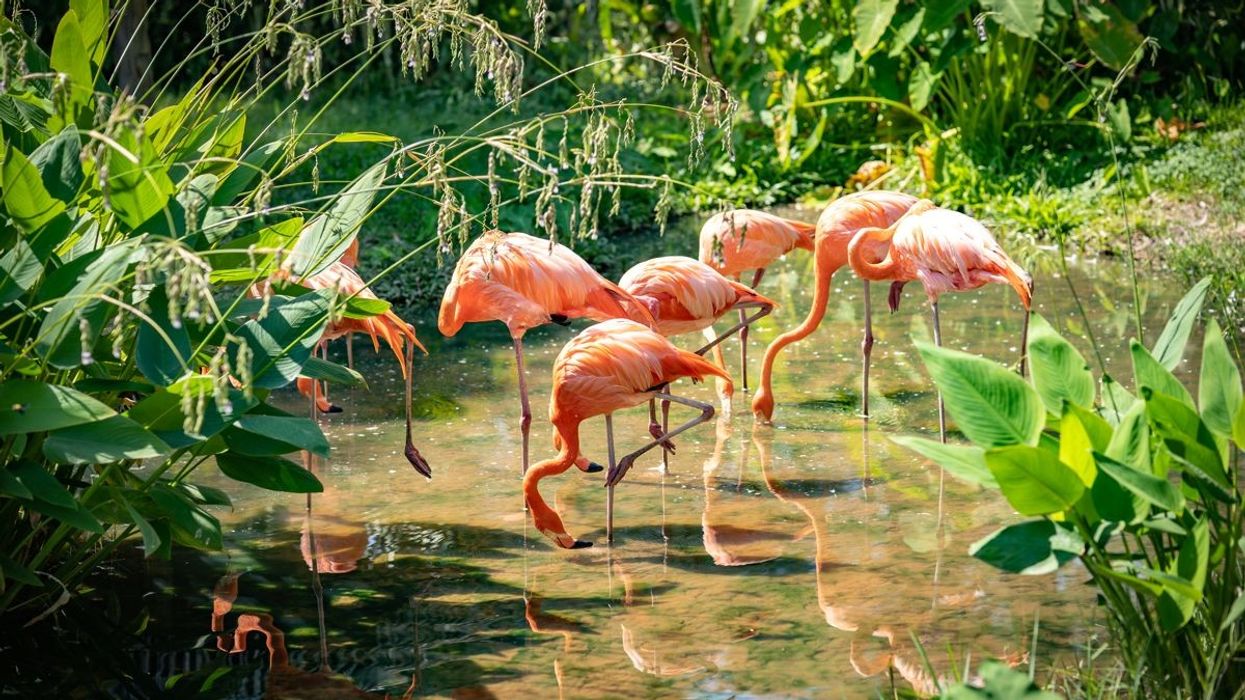
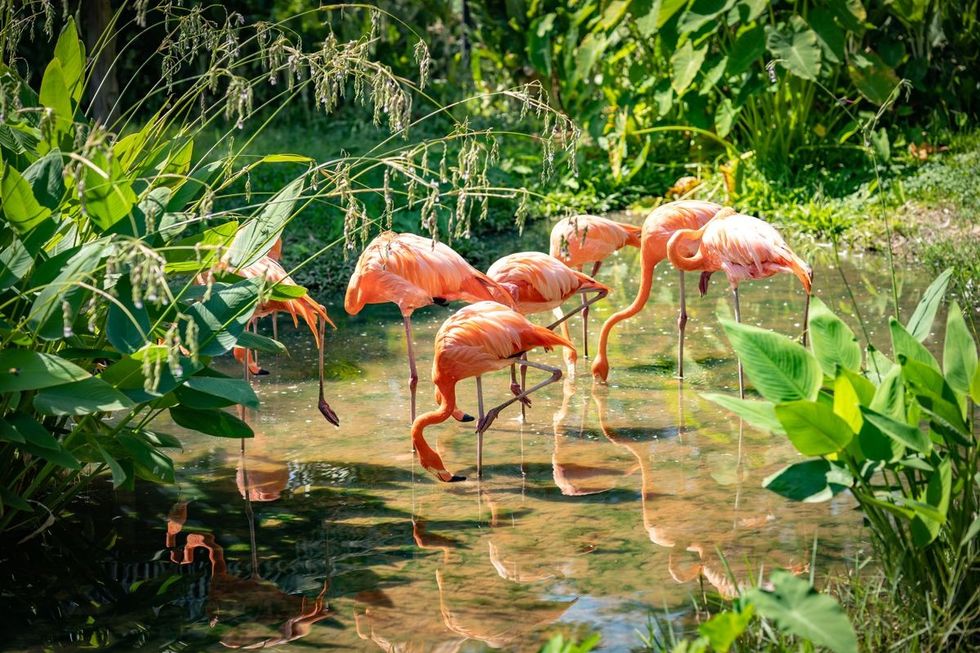

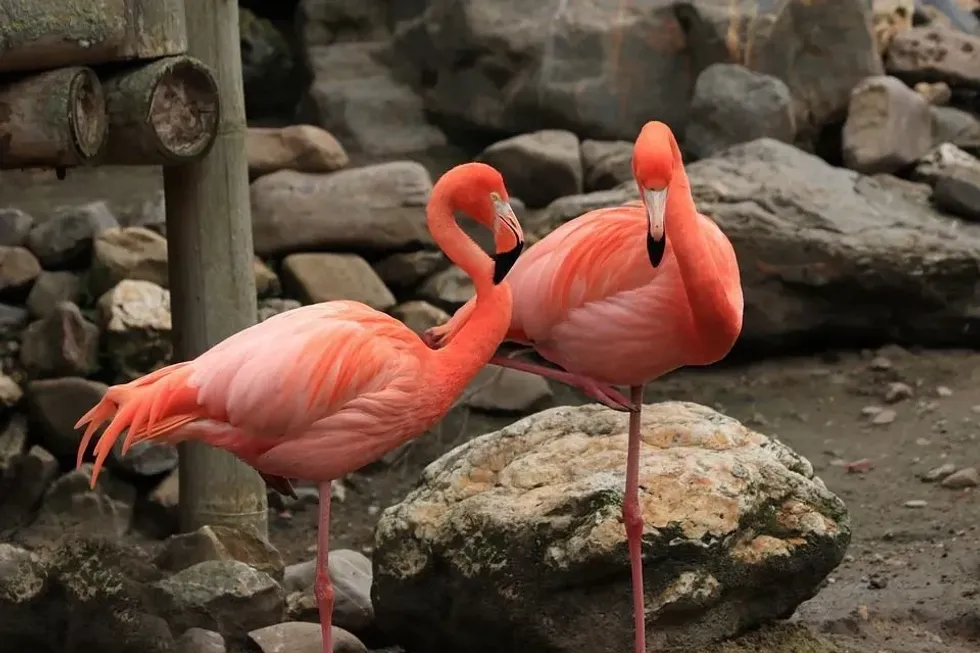
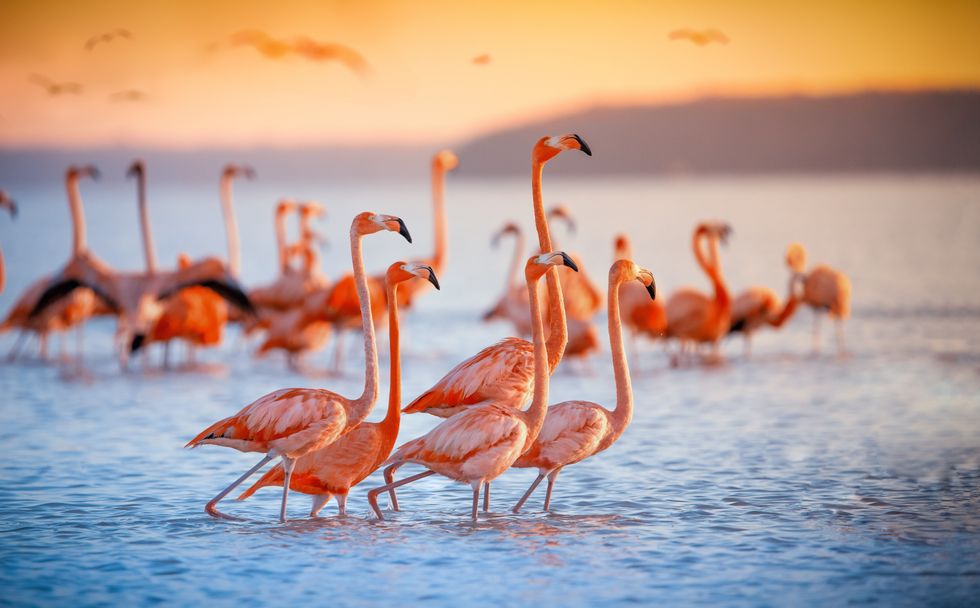 Shutterstock
Shutterstock
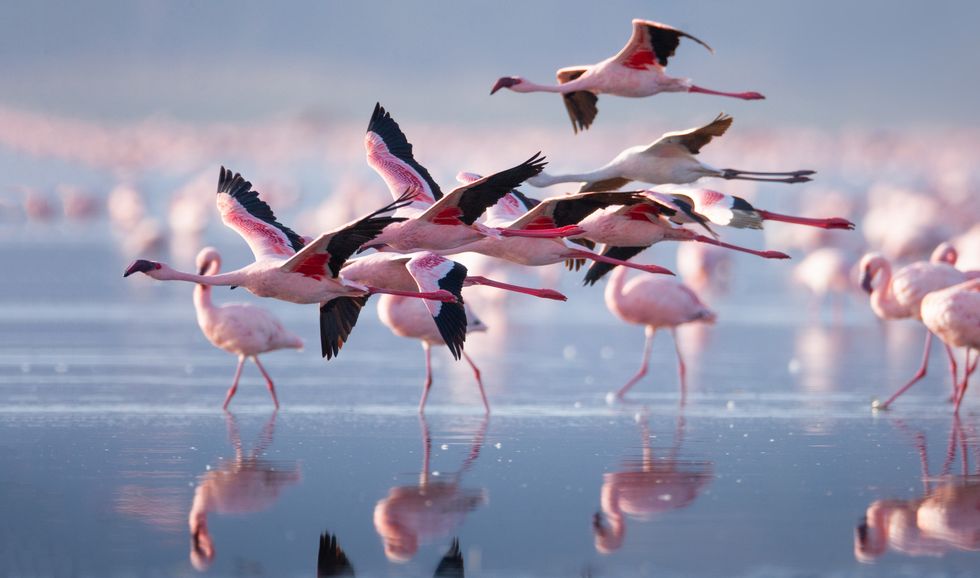 Shutterstock
Shutterstock
